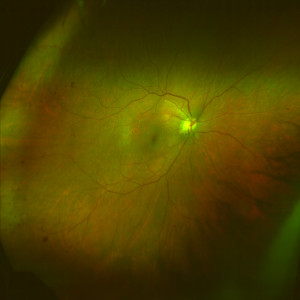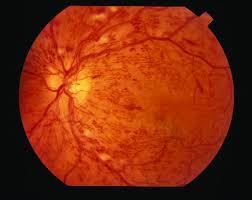Of all the places in the body, the best place to see blood vessels is in the back of the eye. When looking at vessels other places, they are covered with skin and fat, and they better be, or you would bleed out. But in the back of the eye, they are on the surface, and we have the best view of them. Why is this so important? Because many diseases change or damage blood vessels, so the best place to see the blood vessels would be the best place to see this damage, or change.
Each disease changes, or damages the vessels in different ways. In the early stages, diabetes can cause the vessels to bleed; usually the bleeds are small and round. In more advanced stages, the bleeds are large and much more destructive.
Whatever changes, or damage we see with the vessels in the back of the eye, gives us a ballpark idea of what is happening in the rest of the body. If bleeding is seen in the eye vessels due to the patient’s sugar, then the same bleeding would be seen in the vessels throughout the body, you just can’t see it because the vessels are covered with skin and fat, but the damage is still happening. But visa versa is true, if a diabetic has no damage in the eye vessels, then the chances are good the vessels in the rest of the body are damage free.
I think you can see why they say the eye is the window to the body. Also, I want to add, by far, the best way to view and document the vessels in the eye is with the Optomap retinal image scanner. Being able to visualize, and have a permanent image of the retina (the back of the eye) can lead to a wealth of information and patient understanding about overall health.



